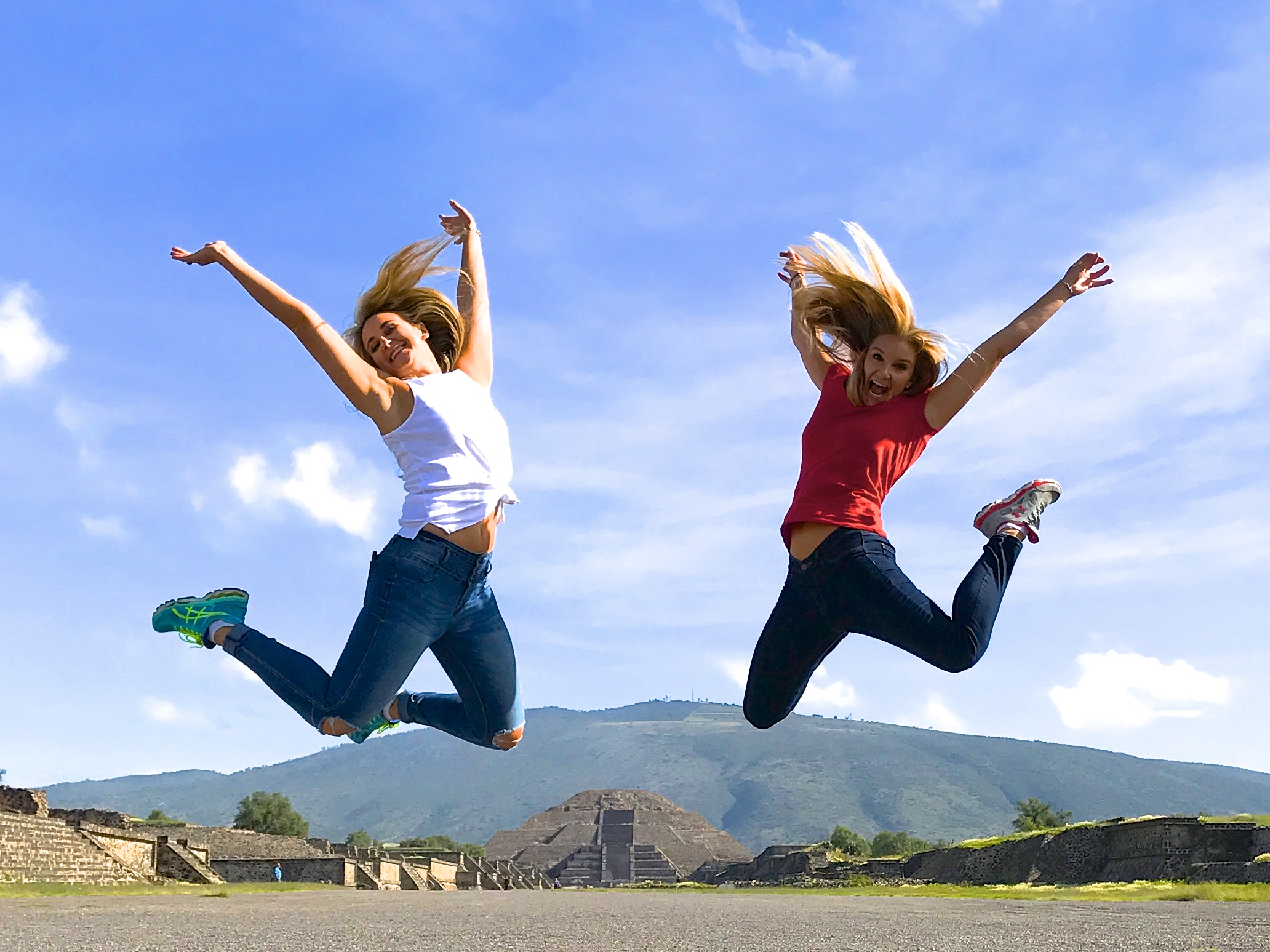
Teotihuacán
Just an hour northeast of Mexico City, Teotihuacán is the largest and most visited archaeological site in Mexico. Anthropologists estimate that at the time of its height, it was the largest city in the Western Hemisphere and stands as one of Mexico’s greatest examples of city planning and pre-Columbian architecture. We decided this was the one day trip we absolutely couldn’t miss when visiting CDMX.
Even though I’m not a fan a group tours, we decided to go that route for this one because we wanted a guide who could provide the background and history on what we were seeing. We had to meet the bus at 6:20am, which I was not thrilled about… but after reading that it’s best to visit the ruins in the morning before the crowds, I decided I would deal with that way too early alarm.
With half shut eyes, we met the group and even though we already had our morning coffee, we got another shot of caffeine when our guide, Herson, introduced himself and started right in with the jokes. We immediately knew we were going to have a fun day and that this group tour was a good choice.
Herson provided some commentary on the trip out of Mexico City, explaining that the southern part of CDMX is where the wealthy people live and the northern neighborhoods, which we were passing through, is where the poor people reside. The majority of Mexico City’s population resides in these flavelas north of the city and the houses are piled on top of each other stretching up the mountain peaks. But their bright colors make a beautiful backdrop for the scenery. Herson pointed out the cable car these residents use to get from one side of the valley to the other, but told us this was “no Aspen.” He also said his future was visible off to the left and pointed out a Mexican cemetery, lol. The jokes just kept coming.
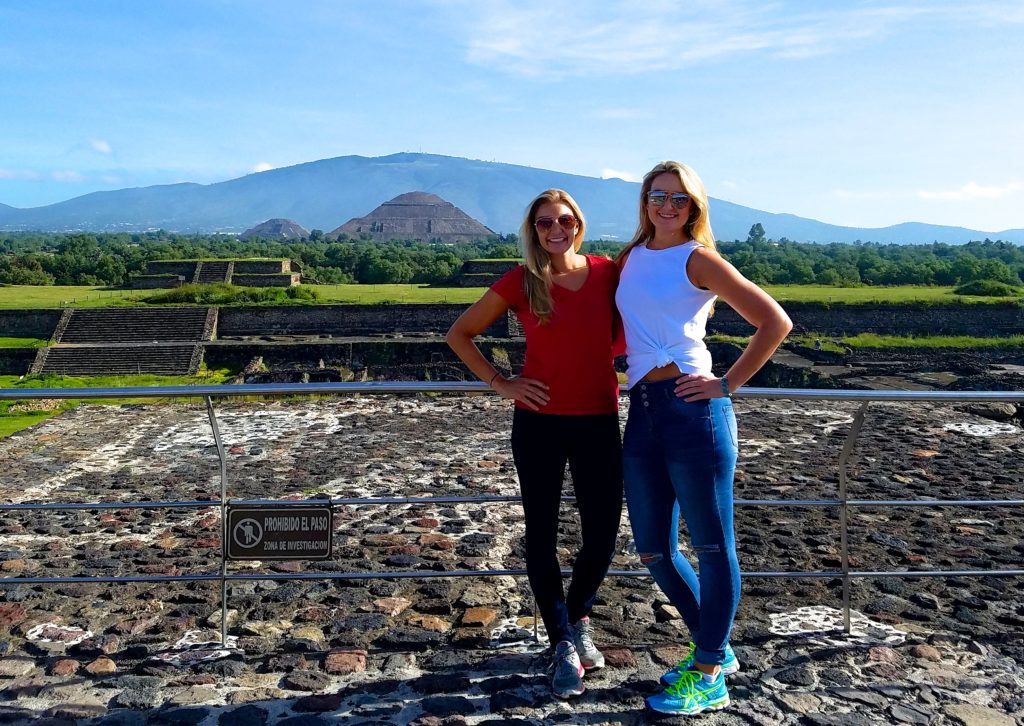
When we arrived at Teotihuacán, we pretty much had the place to ourselves… unlike in its heyday when it was bustling with an estimated 150,000 residents stretching over 20 square kilometers in the northern Valley of Mexico. Not much is known about the people who developed this ancient city, but we do know that the name translates to “Place of the Gods.” However, the name was given to this site several centuries later, so what the people of Teotihuacán called their city, what language they spoke and what heritage they descended from, still remains unknown. This city was inhabited from 100 BC until 700 AD, when the civilization began to decline, again for reasons unknown. But there are several theories predicting it was from either drought imposed famine forcing inhabitants to migrate, an intense struggle for power that divided the ruling class, invasion by other groups from the north, a popular uprising against the rulers or some combination of the above.
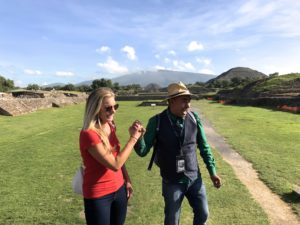 Herson explained that based on a new form of geo radar technology, archeologists have uncovered a lot of new information in the last few months and much of these new findings negates previous theories and data. It was interesting to hear his take and how it differs from what has been accepted for quite some time and even published on signs and guides for visitors to both the Teotihuacán archeological site and the Anthropology Museum in Mexico City. It will be exciting to see what else is uncovered moving forward once this new technology improves and is used more regularly.
Herson explained that based on a new form of geo radar technology, archeologists have uncovered a lot of new information in the last few months and much of these new findings negates previous theories and data. It was interesting to hear his take and how it differs from what has been accepted for quite some time and even published on signs and guides for visitors to both the Teotihuacán archeological site and the Anthropology Museum in Mexico City. It will be exciting to see what else is uncovered moving forward once this new technology improves and is used more regularly.
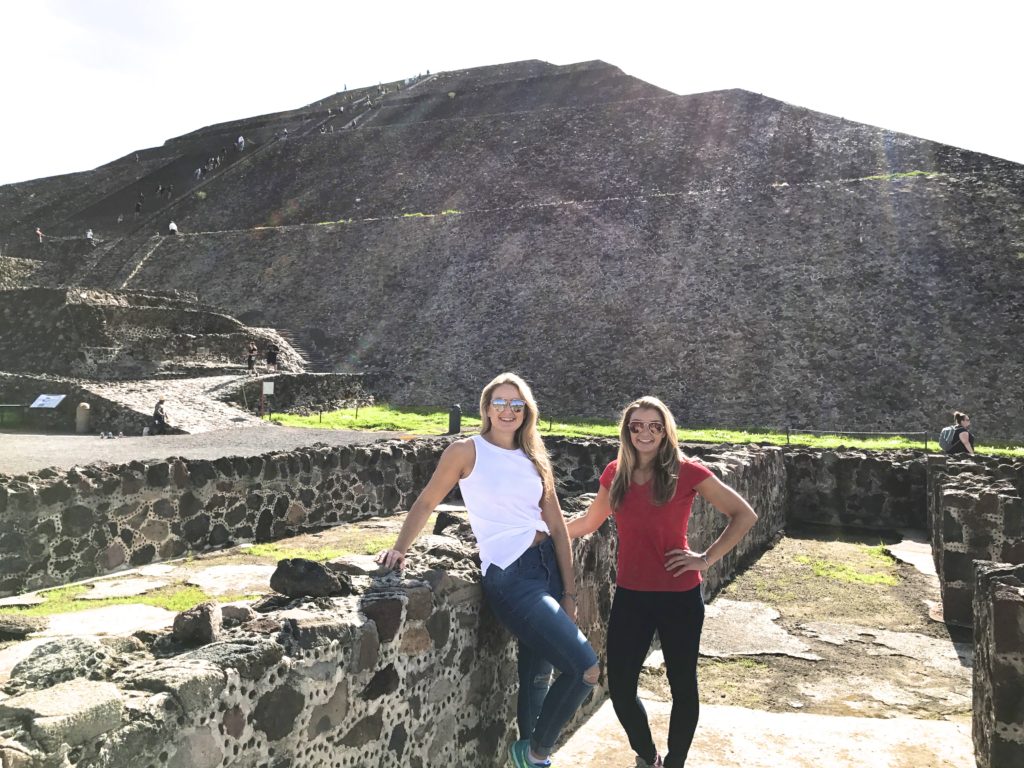
Teotihuacán is known for its two massive temple pyramids. The Pyramid of the Sun (Pirámide del Sol) is one of the largest and most impressive pyramids in the world, measuring almost 70 meters high. Herson gave us an hour of free time so we could climb to the top at our own pace and take as many selfies as we wanted. Britany and I obviously took full advantage of this opportunity and might have had a little too much fun with our photo shoot, lol. Herson seemed to appreciate the effort though 🙂
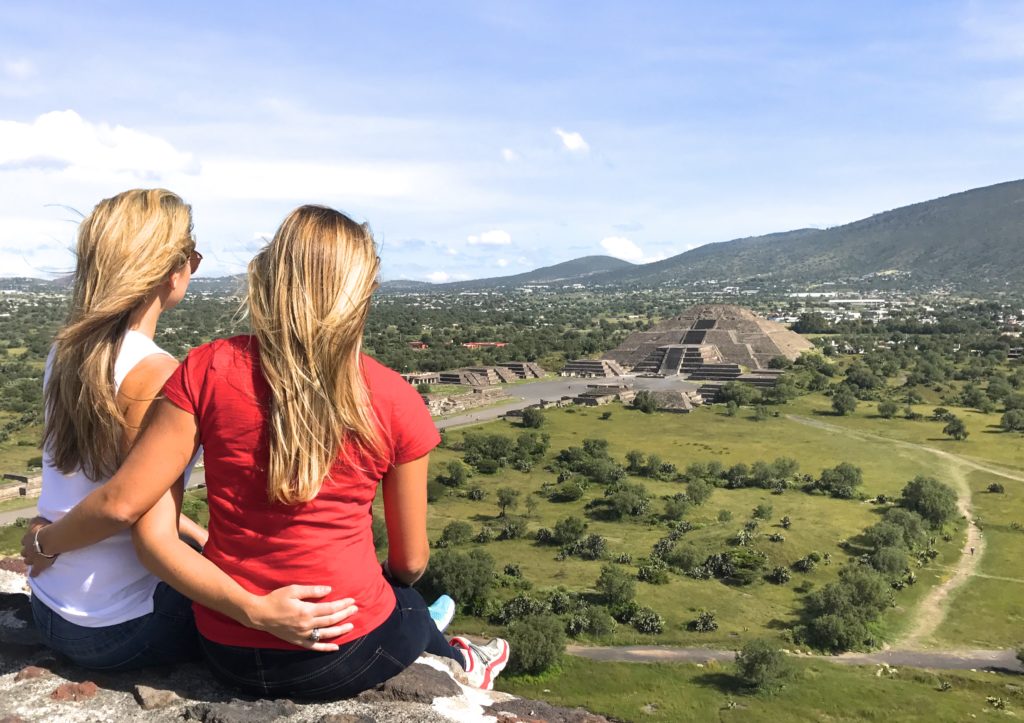
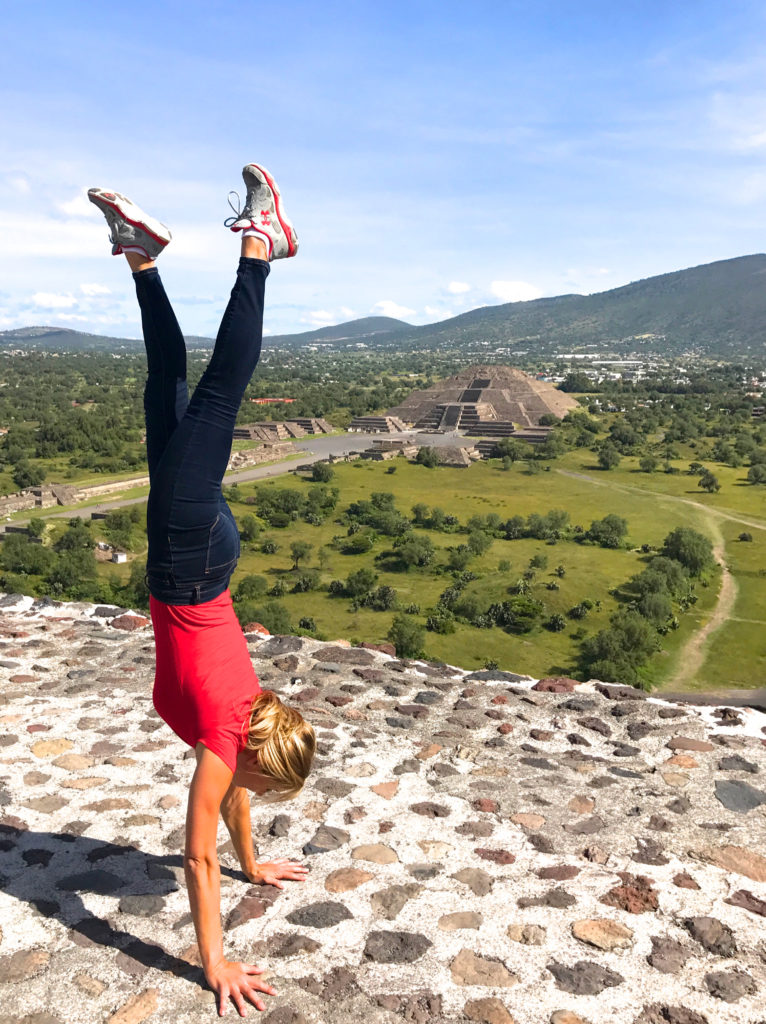
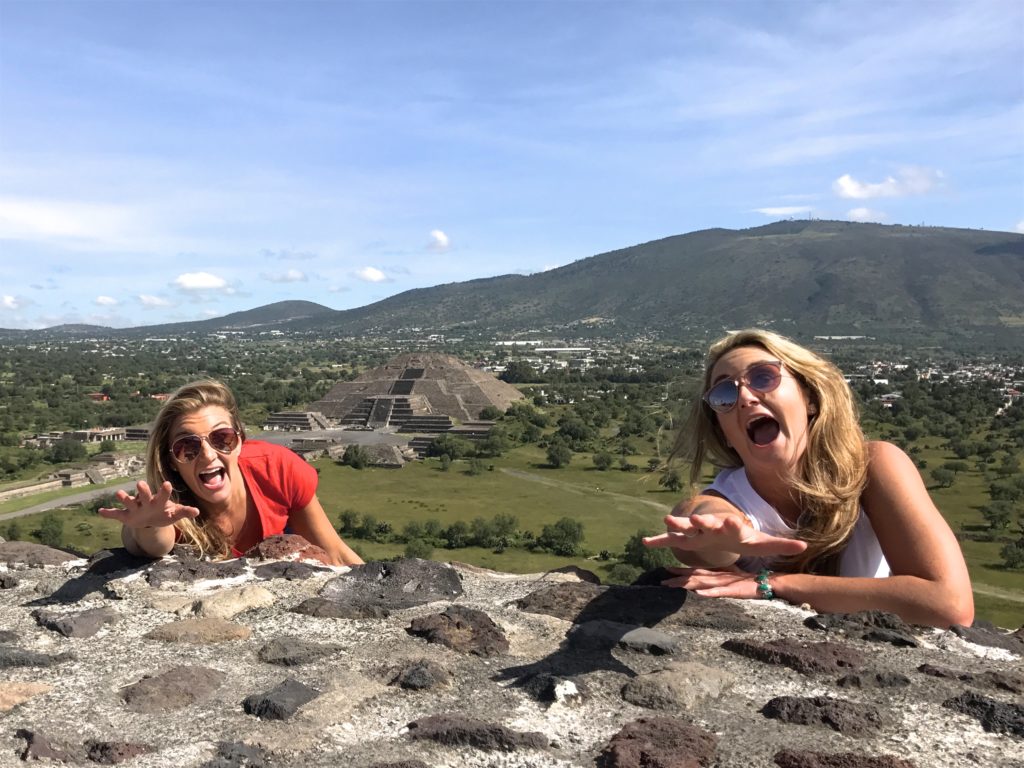
The Pyramid of the Moon (Pirámide de la Luna) at the northern end of the city is 46 meters high, but still offers an impressive view from the middle level, which is as high as you are allowed to climb. This Pyramid was one of the principal ritual areas in Teotihuacán and mirrors the shape of the mountain, Cerro Gorda, standing behind it.
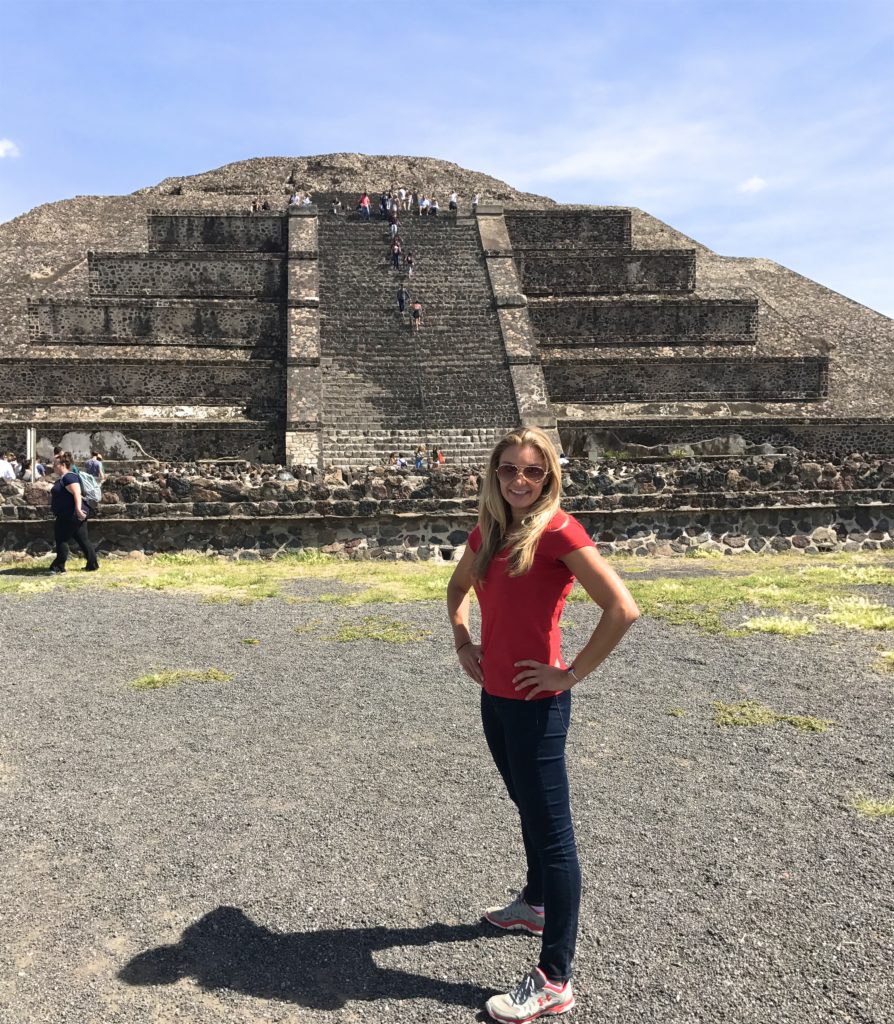
The Citadel (La Ciudadela) sits on the south end of the city and is guessed to be the main plaza once located at the geographic center of Teotihuacán and also home to important ritual ceremonies. The Avenue of the Dead (Calzada de Los Muertos) is the main boulevard connecting the Citadel and the Pyramid of the Moon, stretching two kilometers and flanked by smaller pyramids which were believed to be the homes of Teotihuacán residents.
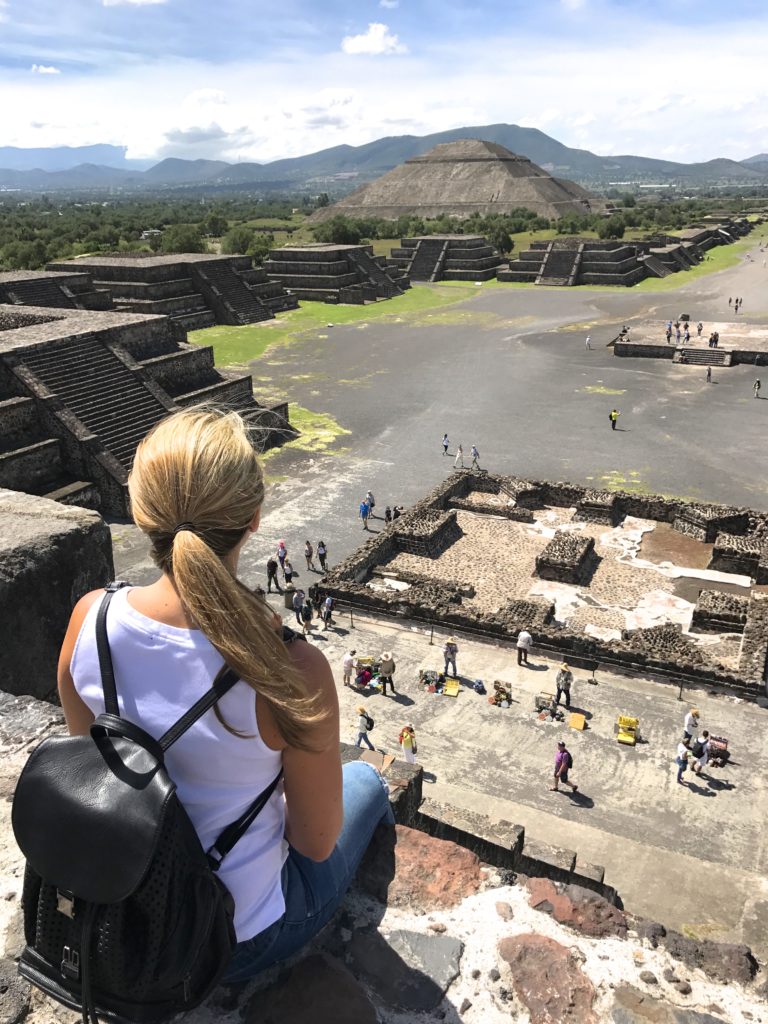
After Herson wrapped up our educational and entertaining tour of Teotihuacán, we boarded the bus and headed to a local obsidian workshop to learn more about the black volcanic rock native to the area and for a Tequila and Mezcal tasting. Now let me remind you that it’s only 11:45am and Brittany and I have each only had a cold brew coffee and a Clif Bar… and lunch isn’t served until after the tasting. Hasta mañana! Just kidding… kind of. We got to try shots of two different authentic and locally made tequilas, a mezcal and a pulque, also known as “agave wine” made from the fermented sap of the agave plant. Let’s just say we were feeling pretty good after that… so good that we decided we should bring some bottles home with us.
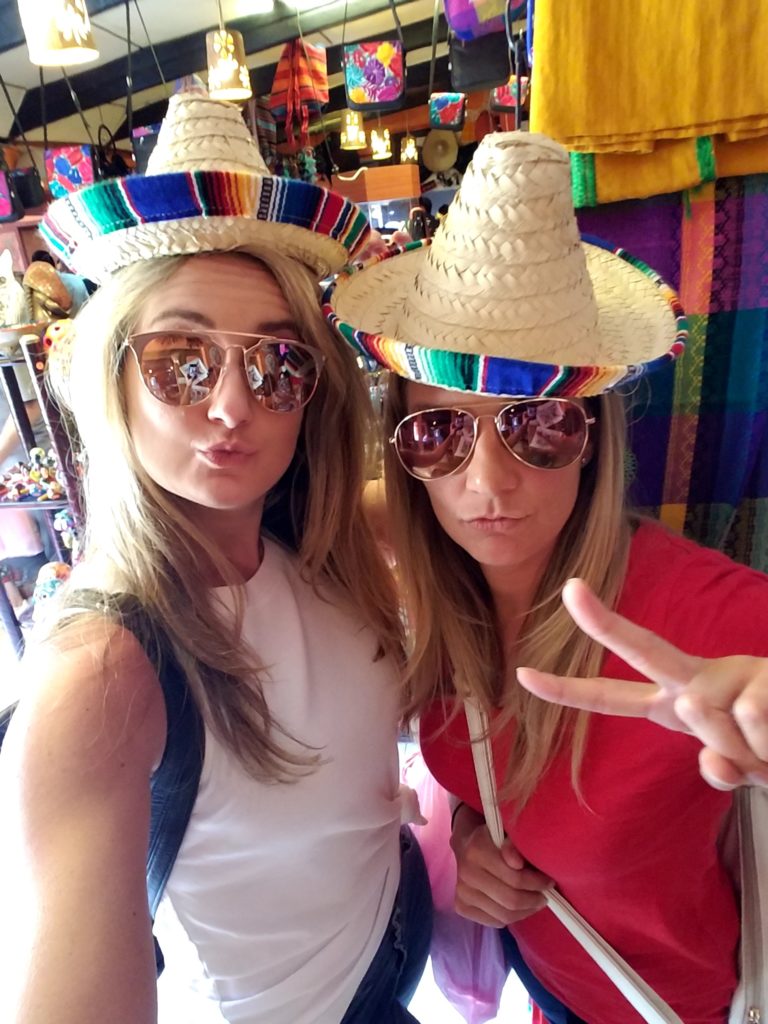
We sat down to lunch, which gave us an opportunity to try Mexican specialities native to the area and then boarded the bus to head back to Mexico City. We enjoyed chatting with Herson on the way back and learning more about him and his country. We were so thankful he was our guide… he made the day that much more enjoyable for us and we learned a lot from him!